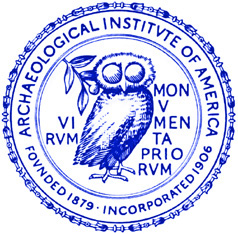
Nick Triozzi: Biography
Nick is a PhD candidate at UC Santa Barbara and plans to finish his degree by 2023. He earned his Master’s degrees in Anthropology from Penn State University (2019) and Monmouth University (2014). Nick was formerly employed as the GIS and Photography Specialist in the Nels Nelson North American Archaeology Lab at the American Museum of Natural History in New York City. When not doing research on the Neolithic, he enjoys spending time with his dog, weekend crossword puzzles, surfing, and fishing for halibuit.
Nick Triozzi: Project Summary
Early-Middle Neolithic Livestock Management in Dalmatia: Insights from Stable Isotope Analysis
Nick’s dissertation research investigates the ways in which innovation shaped the management of livestock by Early and Middle Neolithic (6000-5000 BCE) farmers on the Dalmatian Coast of Croatia. With the emergence of Danilo-style pottery in Dalmatia around 5400 BCE came ceramic sieves and other specialized vessels that were used to produce fermented dairy foods such as cheese and yogurt. Processed dairy foods offer significant nutritional advantages over raw milk, are easier to transport, and can be stored for longer. Nick will use stable isotope analysis of sheep and goat bones and teeth from Early and Middle Neolithic archaeological contexts to reconstruct and compare animal diet, mobility, and reproduction. His research aims to improve our understanding of how novel technologies and food production strategies shape the elaboration of small-scale farming economies and how these processes over time critically restructure local ecologies and selective pressures acting on the evolution of our species and the animals we domesticate.

Arianna Garvin: Biography
Arianna Garvin received her B.A. in Anthropology and Biology from the University of Virginia in 2017 and her M.A. in Anthropology from the University of California, San Diego in 2020. She is a current graduate student in the UCSD Anthropology program. Garvin is American and Peruvian and uses archaeobotanical approaches in Perú to explore food-related practices in contexts of diaspora, or the migration or translocation of people to new regions. Her current work focuses on the ancient Tiwanaku (ca. A.D. 500-1100) and the role of homeland foods throughout state expansion (A.D. 600- 1100). For her dissertation project, Garvin plans to combine archaeobotanical, geological, and archaeological methods to study ancient agricultural and migration responses to El Niño Southern Oscillation (ENSO) events in Perú, because she believes these adaptations are important to understanding modern and future cultural responses to ENSO happenings and the climate crisis.
Arianna Garvin: Project Summary
Garvin’s project combines household archaeology and archaeobotany to understand how culinary and agrarian practices might reflect ancient Andean identities and migration histories. More specifically, the AIA-OC grant will help support a comprehensive archaeobotanical analysis, which assesses the relative importance of local and nonlocal cultivars at the large, Tiwanaku-residential site of Cerro San Antonio in Locumba, Perú. The Tiwanaku civilization (ca. A.D. 500-1100) originated in the Bolivian altiplano of the south-central Andes and largely depended on frost-resistant crops, such as quinoa and potatoes.Throughout the Middle Horizon, the Tiwanaku expanded and established colonies in the Peruvian coastal valleys to acquire lowland crops, such as maize. Garvin’s project employs archaeobotanical methods at the Tiwanaku-colonial site of Cerro San Antonio in the Locumba Valley and asks to what degree the Tiwanaku colonists maintained their homeland food traditions as they migrated into the coastal valleys. Archaeobotanical investigations provide an avenue to learn what our ancestors ate and grew, and Garvin eventually aims to explore how ancient culinary and agrarian practices might be reincorporated into modern people’s lives in response to the climate crisis, global health concerns, and food insecurity.
